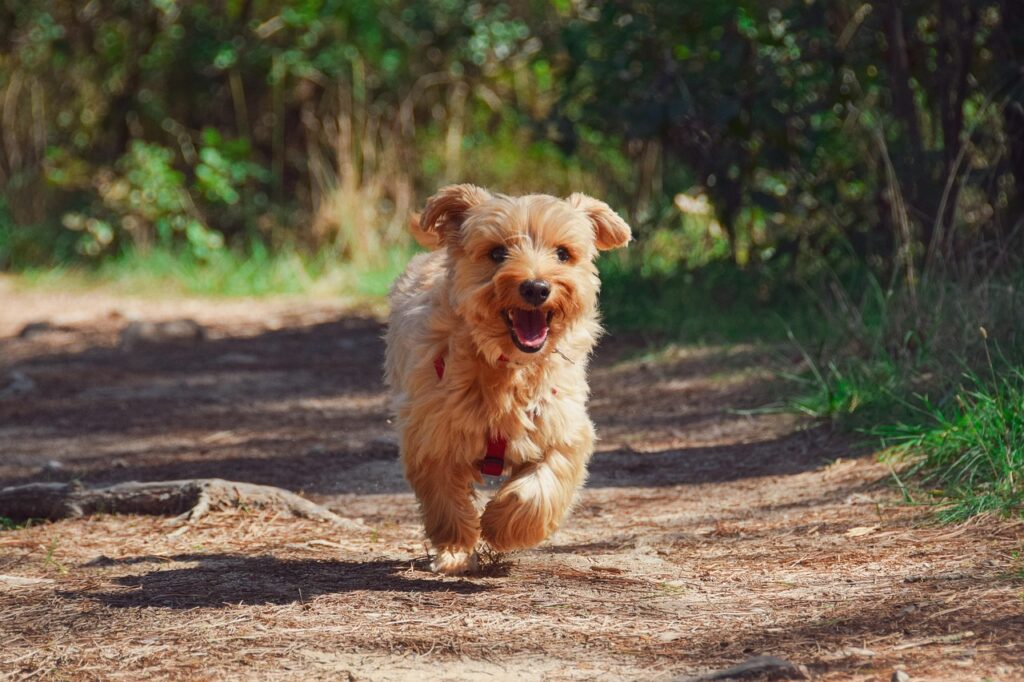More pet owners are beginning to rethink how outdoor spaces can be adapted for their four-legged companions. As families grow to include dogs, cats, rabbits, and even backyard chickens, there is a growing interest in creating secure and functional outdoor spaces tailored to their needs.
A metal carport is often overlooked as a potential solution, but turning it into a covered pet area can provide year-round shelter, protect your pets from extreme weather, and create a designated environment that promotes health and safety.
Many homeowners already recognize the value of keeping pets safe outdoors. However, setting up a new structure can be expensive and time-consuming. Repurposing an existing metal carport is not only cost-effective but also a sustainable option. With thoughtful planning, this structure can become a haven for pets to play, rest, and enjoy the outdoors while being protected from environmental hazards.
Before diving into this transformation, it is helpful to understand the structure of your metal carport and how to adapt it for animal safety, comfort, and enjoyment. From design elements and materials to cost considerations and practical benefits, there is a lot to explore when evaluating if this project is right for you.
Understanding the Structure of a Metal Carport
A metal carport is typically composed of a steel frame and a roof that shields vehicles from sun, rain, and snow. The sides are often open, although some models include partial wall panels or can be enclosed entirely. The open design is what makes these structures ideal for customization. They can be adapted for uses beyond vehicle storage, including workshops, patios, and yes, pet areas.
The solid steel framework is strong enough to withstand heavy winds and rain. This is important for pet safety, especially in areas that experience frequent storms or temperature changes. The fact that these structures are elevated and open also makes them ideal for ventilation, which is a crucial factor when keeping pets outdoors.
Knowing the basic structure helps in visualizing the additions and adjustments that will need to be made. Adding flooring, side panels, and pet-friendly furnishings can be done with a moderate budget and some creativity. This adaptability is one of the reasons why metal carports are gaining popularity as multipurpose structures.
Why Pets Benefit from a Covered Outdoor Area
Animals enjoy spending time outside, where they can explore, play, and exercise. A covered outdoor space gives them the freedom to enjoy fresh air without the risks that come with full exposure. In hot climates, prolonged sun exposure can cause dehydration or heatstroke. In colder regions, icy winds and snow can be dangerous or even fatal for some pets. A carport offers shade and shelter year-round.
Another key benefit is the separation between indoor and outdoor living spaces. Pets that shed heavily or track dirt indoors can be given designated times and areas to enjoy outdoor play. This setup also helps with training routines, giving pets a clear boundary between rest, activity, and bathroom areas.
For pet owners with limited yard space, converting a carport maximizes existing square footage. It creates a fenced-in area with enough vertical and horizontal space to accommodate multiple pets. This is particularly beneficial for dog owners, but can be equally effective for housing outdoor cats, rabbits, or chickens with appropriate adaptations.
Design Considerations for Pet Safety
The safety of your pets should be the first priority when converting a carport. Begin by addressing the flooring. Bare concrete can be hard on paws, especially in the heat or cold. Adding rubber mats, artificial turf, or even wood decking can provide a more comfortable surface. These materials are also easier to clean and maintain.
Next, think about containment. Open carports need fencing or panels to prevent pets from wandering off. Chain-link fencing, welded wire panels, or wood slats can be installed between the carport posts. Make sure the fence height and spacing are appropriate for the type of pet you have. Dogs that like to jump may require higher barriers, while smaller animals need tighter mesh to prevent escape.
Roof and weatherproofing enhancements are also worth considering. Adding insulation or a ceiling panel can help regulate temperature. In colder areas, incorporating a heat lamp or pet-safe space heater will ensure warmth. Installing curtains or roll-down shades can block wind and rain. All materials used should be non-toxic and designed for outdoor use.
Incorporating Comfort and Enrichment
Pets need more than just shelter. They thrive in environments that stimulate their senses and encourage activity. Inside the converted carport, set up dedicated areas for play, rest, and feeding. Soft bedding, toys, and scratching posts help pets relax and engage their natural behaviors. For dogs, this might include chew toys, ramps, and tunnels. For cats, consider perches and hiding spots.
Water access is crucial. A fresh supply should always be available, ideally in a spill-proof dish. Elevated feeders can keep food cleaner and reduce mess. Secure storage bins can hold pet supplies like treats, leashes, and grooming tools, keeping everything tidy and within reach.
Adding natural elements like plants or grass patches can enhance the space. Ensure that any plants used are safe for animals, as many common garden plants can be toxic. A small sandbox or digging pit can offer an outlet for energetic dogs that love to dig.
Climate Considerations and Seasonal Use
The climate in your area will greatly influence how you design your pet-friendly carport. In hot climates, focus on ventilation, shade, and cooling. Installing fans, misting systems, and UV-resistant roofing materials can help maintain a safe environment. Reflective roof coatings or painted surfaces can also help reduce heat absorption.
In colder climates, the priority shifts to warmth and insulation. Drafts can be minimized with sealed wall panels or roll-down tarps. Heated beds or pads may be necessary for pets that are not cold-hardy. In wet areas, ensure drainage is sufficient to avoid puddling or muddy conditions.
Consider how the space will be used throughout the year. Some modifications, like weatherproof enclosures, may be seasonal and removable. Others, such as insulation or lighting, are permanent features that enhance usability in all conditions. A flexible design will allow you to adapt the space as the seasons change.
Permits and Local Regulations
Before beginning construction or modification, check with your local government about building codes and zoning regulations. Some areas require permits for enclosing or altering structures. There may also be restrictions related to fencing height, animal enclosures, or utility installations.
If your property is part of a homeowner’s association, review the community guidelines. Some associations limit structural modifications or have specific requirements for pet enclosures. It is always better to clarify any legal or zoning questions in advance to avoid fines or mandated removals.
You may also need to consider noise ordinances if you plan to house multiple animals or anticipate barking. Creating visual barriers and sound-absorbing features can help minimize disturbances to neighbors and promote good relations in your community.
Cost and Budgeting
Converting a metal carport into a pet area is generally more affordable than building a new structure from scratch. Costs will vary depending on the size of the carport and the features you wish to include. Budgeting should account for fencing materials, flooring upgrades, insulation, furnishings, and safety features.
Labor costs can be reduced through do-it-yourself efforts, but professional assistance may be necessary for electrical work or major structural changes. Pet-friendly materials, such as non-toxic paints, chew-resistant panels, and weather-resistant bedding, may cost slightly more but are essential for long-term durability and safety.
Start with the essentials. Secure the perimeter and install proper flooring. Once the basic structure is complete, additional comforts and upgrades can be added over time. This approach allows for better budget management and flexibility.
Long-Term Benefits of a Pet Carport
Investing in a dedicated pet area brings lasting rewards. Your pets will benefit from having a consistent routine, exposure to the outdoors, and a safe place to explore. You will benefit from reduced indoor mess, easier training, and peace of mind knowing your animals are safe.
A well-designed pet area can also increase property value. Families with pets often seek homes with outdoor accommodations. The adaptable nature of the carport means it can always be converted back into a traditional structure or repurposed for other needs in the future.
Additionally, spending time with pets in a designated outdoor space enhances the bond between humans and animals. Shared playtime, training sessions, or simple relaxation in a safe and comfortable environment can improve emotional well-being for both pets and owners.
Creative Ideas and Case Studies
Some pet owners have turned their carports into miniature dog parks with agility equipment and obstacle courses. Others have transformed them into cozy catios with climbing towers and sunbathing ledges. For those with multiple pets, carports can be divided into zones with individual kennels or rest areas.
One popular trend includes integrating garden elements with the pet area. Raised planters, edible herbs, and natural wood elements create a backyard oasis that is both functional and beautiful. Another creative solution is adding clear roofing panels to let in sunlight while protecting against the elements.
These examples highlight the endless possibilities available when repurposing a metal carport. The only limits are space, budget, and imagination.
Final Thoughts
Turning a metal carport into a covered outdoor pet area is a practical and rewarding project. It offers protection, comfort, and enrichment for your pets while making use of an existing structure. With proper planning, a little investment, and thoughtful design, your carport can become one of the most loved areas in your home for your animals.
This transformation allows for a balance between functionality and care. Pets can enjoy nature safely, and you can enjoy peace of mind knowing they have a space created just for them. For families with pets, this might just be one of the most satisfying improvements to your property you will ever make.

